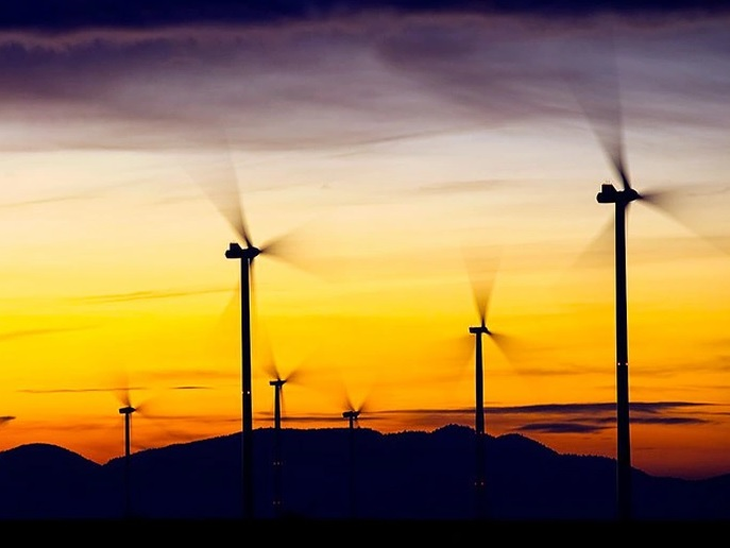
Thesis author develops a methodology that identifies, manages, and mitigates resonances
T&B Petroleum/Unicamp Newspaper
The winds blow in favor of the diversification of the Brazilian electrical matrix. Data from the Brazilian Wind Energy Association (Abeeólica) indicates that wind energy generation currently accounts for 13.2% of the national grid. There are 890 wind farms installed in 12 states, with a generating capacity of around 25 gigawatts (GW). The association expects to end 2023 with 29 GW of installed capacity and reach approximately 45 GW in the country by 2028.
In addition to promoting the economic and social development of the areas where they are installed—85% of Brazilian wind farms are located in the Northeast region—the wind turbines, whose presence in the national grid continues to increase, represent an opportunity to boost research aimed at creating new technologies and inputs for the sector.
A doctoral research conducted at the Faculty of Electrical and Computer Engineering (Feec) at Unicamp focused on the analysis of one of the issues that can affect wind farms: the resonance phenomenon. Winner of the 2023 Capes Thesis Award in the Engineering IV category, the work proposes a user-friendly methodology to identify, manage, and mitigate resonances. The thesis is authored by Andrés de Jesús Arguello Guillén from Costa Rica, under the guidance of Professor Walmir de Freitas Filho and co-supervised by researcher Ricardo Torquato Borges.
Oscillations
Resonance is a physical phenomenon that occurs in oscillations when an external force is applied to a system at a frequency similar to its natural frequency. As a consequence, there is an increase in the amplitude of this oscillation due to the accumulation of force applied. For example, when a child plays on a swing, they oscillate with a certain amplitude and frequency. If we additionally push the swing at the same frequency, the toy tends to oscillate with an increasingly larger amplitude. This effect also occurs in electrical systems.
Normally, the phenomenon does not pose a problem, as networks can dampen these oscillations. However, when a distortion in the natural frequency of oscillations appears, the system can become overloaded. "It's precisely in cases where the amplification of disturbances occurs that generators are triggered, capacitors burn, and undesirable operations occur, affecting the entire system," explains Guillén.
Regarding the equipment used in wind systems, resonances can occur due to the characteristics of systems based on power electronics, aiming to enhance efficiency and flexibility in energy generation by reducing losses and interference. Depending on how their controllers are configured, the network's damping capability can be reduced or even generate a new source of oscillations.
Brazil at the forefront
Guillén's research illustrates Brazil's prominent position in wind energy generation—being the sixth in the world in terms of installed capacity—as well as in scientific production focused on the sector. "Brazil is at the forefront of power systems research worldwide. I tell my students that if they want to study the subject, they should come to Brazil," says the Costa Rican researcher. He attributes the success of research in the area to the excellence of universities, research institutes, and partnerships formed with sector companies. "These companies provide us with demands and encourage us to seek new solutions and answers."
The Capes Prize represents another achievement for the group of researchers at Feec. "It was a great honor to receive the award, but a work is never done by a single person," reflects Guillén, referring to his mentors and colleagues. For Borges, the effort of researchers is crucial for the sector's development. "No technological advancement happens without hitches. If we want to increase the participation of wind energy generators, problems may arise, and academia must be ready to contribute solutions," he evaluates.
The study focused on the analysis of two types of resonance: the so-called "unstable," which increases indefinitely, posing a greater risk to the integrity of systems, and the "weakly damped" or "harmonic" resonance. In this case, the oscillation follows a constant frequency and intensity, which is less severe in the short term but can lead to a negative overload over time, as this oscillation would be imperceptible.
"As wind generation begins to gain ground within the electrical grid, especially with type 3 generators, resonance phenomena that can produce significant impacts and unexpected disconnections, damaging network equipment and even the generators themselves, are becoming evident," Guillén details. Considering this scenario, Guillén analyzed the configurations of wind farms, such as network size and aspects that might trigger resonances.
From the diagnosis, the researcher determined the equipment's tolerance to the phenomenon to facilitate not only the management of the farms and the mitigation of problems but also the work of manufacturers to reconfigure and enhance their machines. "We wanted to assemble a set of tools for engineers to identify when there is a risk of resonance without the need for simulations. They are simplified tools," emphasizes Borges.

Contact us